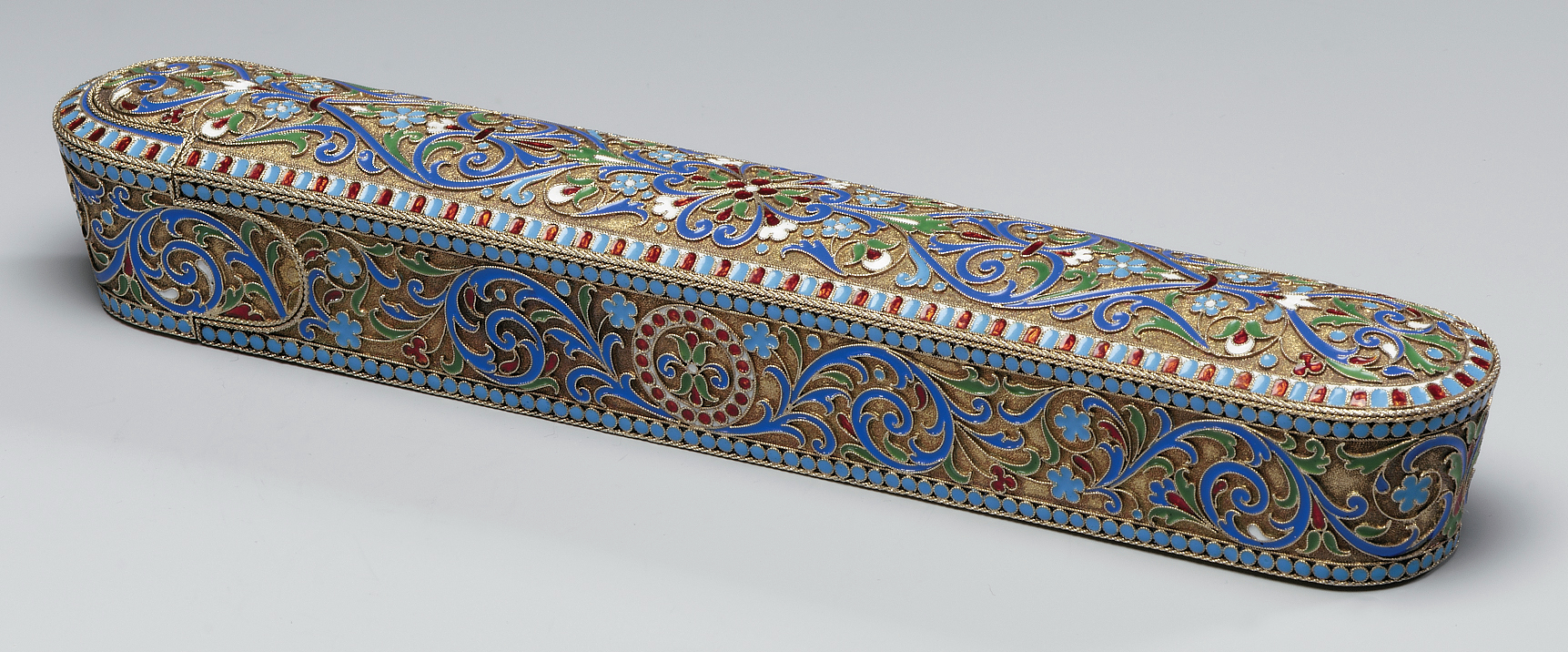 Print Page
Print Page
 Print Page
Print Page
Location: Russia, St. Petersburg
Materials: silver-gilt, opaque and translucent filigree enamel 84 zolotniks
Dimensions: 4 x 24 x 4 cm
Accession Number: RUS 720
Other Notes:
The classic form of the lacquer pen box (qalamdān) – an oblong case (tablah) with a sliding compartment (zạbnah) emerging from one of its rounded ends – evolved in Iran during the 17th century. A functional receptacle for the tools of the scribe, and an attribute of rank within the civil bureaucracy, pen boxes were often adorned with elaborate painted decoration. They attracted the acquisitive eyes of foreign visitors – Sir William Ouseley, visiting Isfahan in 1811, ‘selected thirty, some on account of their particular devices, and others as presents’ for his friends in England. By such means they were disseminated far afield, including Russia where, in the later 19th century the Lukutin manufactory near Moscow produced lacquer pen boxes in the Iranian style. These pen boxes were intended for export, and as such represent a Russian attempt to dominate Iran by commercial means, rather than the military and diplomatic schemes favoured previously.
Replication of the pen box form in other materials, such as silver, was more unusual. In this instance the traditional shape has been followed, while the curvaceous foliate scrolls of filigree enamel decoration are more typical of contemporary Russian work.
Gavriil Grachev founded his firm in St Petersburg in 1866; following his death in 1873 the business was taken over by his sons Mikhail and Semën and became known as Grachev Brothers. Holder of an Imperial Warrant from 1901, the firm produced high-quality silver and enamel in traditional styles. At the 1889 Paris Exposition Universelle the brothers were awarded a gold medal.
Bibliography:
Haydn Williams, Enamels of the World: 1700-2000 The Khalili Collections, London 2009, cat. 63, p. 109.
